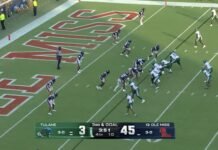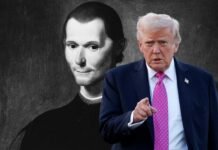The iconic image of the American cowboy—riding tall in the saddle, herding cattle across vast plains—has become synonymous with the spirit of the United States. However, the roots of this quintessentially American figure run deep into the histories of Spain and Mexico. Cowboy culture in the United States is a product of centuries of cultural exchange, adaptation, and innovation, with significant contributions from Spanish and Mexican traditions that predate the arrival of European settlers in the New World.

Spanish Beginnings: The Vaquero Tradition
The origins of cowboy culture can be traced back to the Iberian Peninsula, where Spain’s ranching and horsemanship traditions were well established long before the colonization of the Americas. Spanish settlers brought these practices to the New World in the 16th century, particularly to Mexico, where they established vast ranches or haciendas. The Spanish word vaquero, meaning “cowboy,” comes from vaca, the Spanish word for “cow.” These vaqueros were the skilled horsemen and cattle herders who managed the livestock on these large estates.
The vaquero tradition flourished in Mexico, where it was adapted to the new environment. Mexican vaqueros developed specific techniques for handling cattle in the rugged landscapes of northern Mexico, including what are now the American Southwest states of Texas, New Mexico, Arizona, and California. Their tools, such as the lariat (or la reata), branding irons, and saddles, were essential in managing large herds of cattle over vast, open ranges.

The Mexican Influence on the American Cowboy
As American settlers began moving westward in the 19th century, they encountered the vaquero culture that had been thriving for centuries. Texas, which was part of Mexico until 1836, was a primary site of cultural exchange. American ranchers learned cattle handling, roping, and branding from the Mexican vaqueros, incorporating these practices into what would become the cowboy culture of the American West.
The cowboy’s distinctive attire, including the wide-brimmed hat, chaps, and spurs, also owes much to the vaquero tradition. The sombrero, a wide-brimmed hat worn by vaqueros, evolved into the cowboy hat, designed to protect against the harsh sun and rain. Chaps, or chaparreras, were leather leggings worn by vaqueros to protect their legs from thorny brush and were adopted by American cowboys for the same purpose.
Even the language of the American cowboy has roots in Spanish. Words like rodeo (from the Spanish rodear, meaning “to round up”), lariat (from la reata), and bronco (meaning “rough” or “wild”) reflect the deep influence of the vaquero on the vocabulary of the American West.

The Expansion of Cowboy Culture in the United States
The adaptation of vaquero practices by American cowboys became even more significant after the Civil War, as the cattle industry boomed in Texas and other Western states. The Chisholm Trail and other cattle drives, which involved moving large herds of cattle from Texas to railheads in Kansas, relied heavily on the skills and techniques borrowed from Mexican vaqueros. The long cattle drives became a defining feature of the cowboy’s life, and the vaquero tradition was integral to their success.
In addition to the practical skills, the vaquero culture brought a sense of camaraderie and a code of conduct, often referred to as the “Code of the West.” This informal set of principles emphasized self-reliance, loyalty, and respect for the land—values that were central to both vaqueros and American cowboys.

The Enduring Legacy
Today, the influence of Spanish and Mexican culture on the American cowboy is celebrated and preserved in various forms. Rodeos, a popular sport across the United States, have their origins in the charreadas of Mexico, where vaqueros competed in events showcasing their skills in roping, riding, and cattle handling. The visual and cultural symbols of the cowboy continue to evoke the rich history of cultural exchange between the United States, Spain, and Mexico.
The story of the American cowboy is, at its core, a story of cross-cultural collaboration. The blending of Spanish, Mexican, and American practices created a unique and enduring culture that remains a powerful symbol of the American West. The vaquero legacy lives on, reminding us that the roots of cowboy culture are as diverse and multifaceted as the land it helped to shape.











